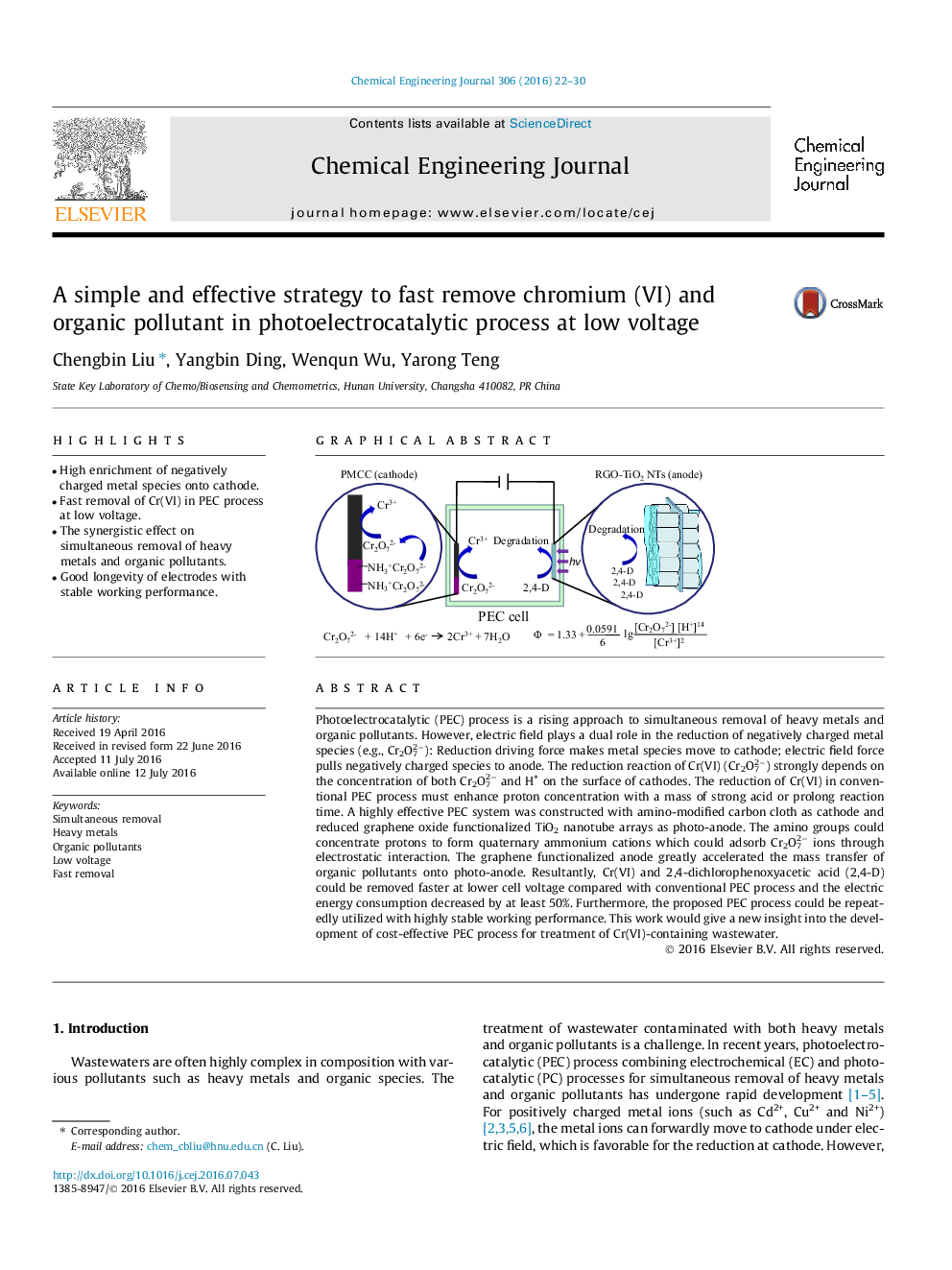| کد مقاله | کد نشریه | سال انتشار | مقاله انگلیسی | نسخه تمام متن |
|---|---|---|---|---|
| 145236 | 456336 | 2016 | 9 صفحه PDF | دانلود رایگان |
• High enrichment of negatively charged metal species onto cathode.
• Fast removal of Cr(VI) in PEC process at low voltage.
• The synergistic effect on simultaneous removal of heavy metals and organic pollutants.
• Good longevity of electrodes with stable working performance.
Photoelectrocatalytic (PEC) process is a rising approach to simultaneous removal of heavy metals and organic pollutants. However, electric field plays a dual role in the reduction of negatively charged metal species (e.g., Cr2O72−): Reduction driving force makes metal species move to cathode; electric field force pulls negatively charged species to anode. The reduction reaction of Cr(VI) (Cr2O72−) strongly depends on the concentration of both Cr2O72− and H+ on the surface of cathodes. The reduction of Cr(VI) in conventional PEC process must enhance proton concentration with a mass of strong acid or prolong reaction time. A highly effective PEC system was constructed with amino-modified carbon cloth as cathode and reduced graphene oxide functionalized TiO2 nanotube arrays as photo-anode. The amino groups could concentrate protons to form quaternary ammonium cations which could adsorb Cr2O72− ions through electrostatic interaction. The graphene functionalized anode greatly accelerated the mass transfer of organic pollutants onto photo-anode. Resultantly, Cr(VI) and 2,4-dichlorophenoxyacetic acid (2,4-D) could be removed faster at lower cell voltage compared with conventional PEC process and the electric energy consumption decreased by at least 50%. Furthermore, the proposed PEC process could be repeatedly utilized with highly stable working performance. This work would give a new insight into the development of cost-effective PEC process for treatment of Cr(VI)-containing wastewater.
Figure optionsDownload as PowerPoint slide
Journal: Chemical Engineering Journal - Volume 306, 15 December 2016, Pages 22–30
